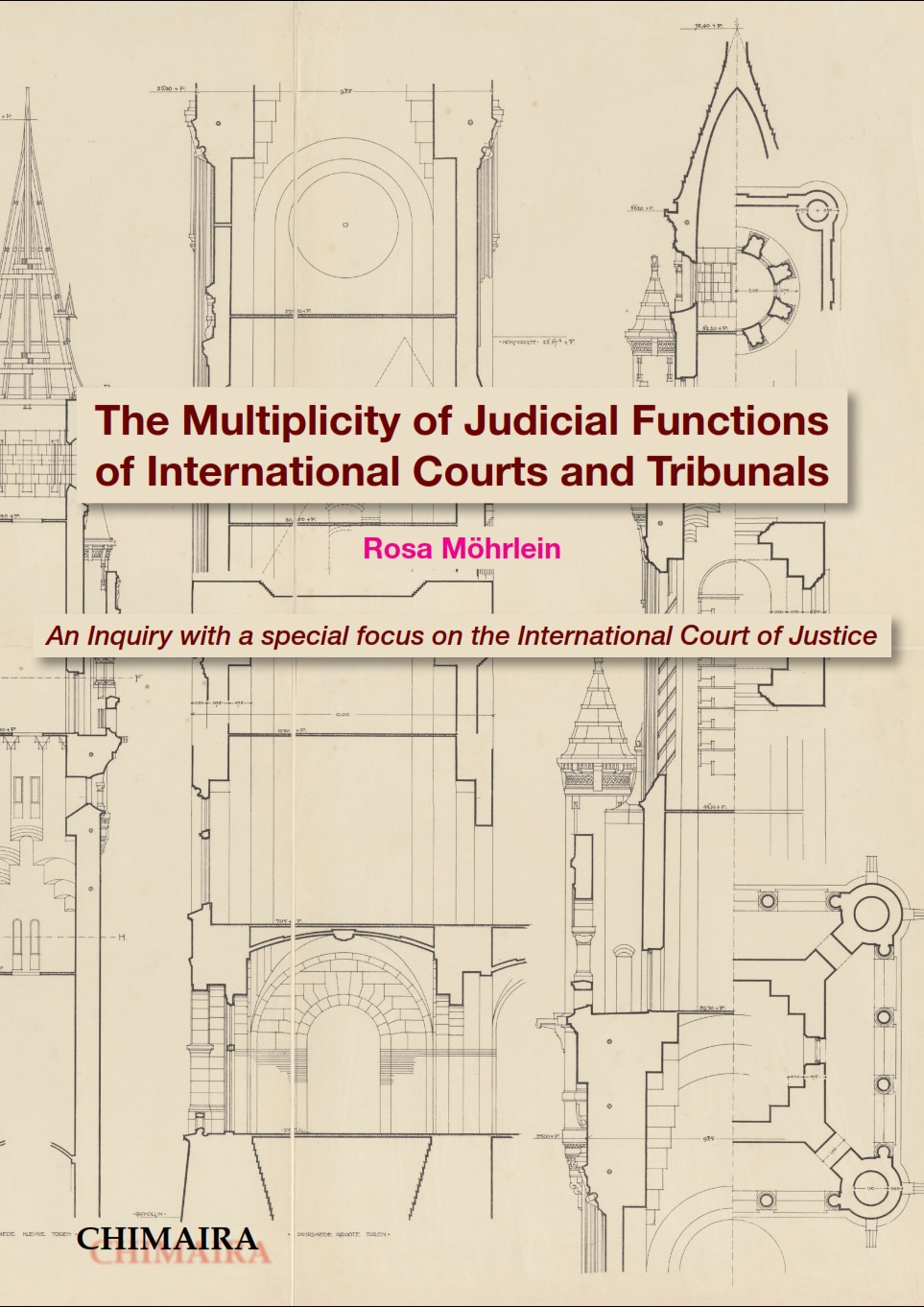
This study of Rosa Möhrlein examines the proposition that international courts and tribunals perform a multiplicity of judicial functions. In recent years, this argument has been extensively debated in theory, but the question of whether this is reflected in practice, and if so, how, has remained largely unanswered. Therefore, this book addresses the question of whether international courts and tribunals do, in fact, perform a multiplicity of judicial functions and, if so, how these judicial functions are shaped in practice.
In the literature, while there is no claim to complete consensus on this matter, and while there may be a greater number of functions exercised, there appear to be five functions that are shared by the majority of international courts and tribunals: dispute settlement, clarification of the law, judicial lawmaking, legitimation and the compliance and control function. Dispute settlement is frequently regarded as a relatively uncontroversial and narrow function, reflected in the realist perspective on international relations, which permits the court or tribunal to only address the claims of the parties and to adhere to the nature of the dispute as described by the parties. This is frequently attributed to the ICJ as its principal judicial function. The question arises as to whether the understanding of dispute settlement should indeed be as narrow as previously assumed, or whether it is in fact much broader in practice. The compliance and control function is often ascribed to more ‘new-style’ international courts, such as the ECtHR. The question here is to what extent it may also be performed by more traditional, inter-state, international courts and tribunals.
In order to complement the theoretical discussion of judicial functions, a selection of cases from the ICJ, the ITLOS and the WTO Appellate Body was subjected to a systematic analysis based on a structured approach, entailing an examination of the context and preliminary stages of the case, as well as the following aspects: (1) the scope and interpretation of the legal questions, and the extent to which the legal issues raised by the parties were reformulated; (2) the manner in which the court interpreted and applied the law; and (3) the way in which it answered the legal questions and prescribed remedies. The application of this approach revealed that in almost all of the cases examined, multiple functions could be identified, even in the same case. The recognition that international courts and tribunals are capable of performing a range of judicial functions provides insight into how judicial bodies can retain authority or influence even when the disputes presented to them do not appear to be resolved. It is also noteworthy that dispute settlement, which might be presumed to be overrepresented in interstate cases, was in fact challenging to discern. Moreover, the control and compliance function was evident in the majority of judgments and advisory opinions examined.
The methodological approach employed in this study can be applied to other cases, including those of other international judicial bodies, thus providing a systematic analysis of the practice of the exercise of judicial functions.
Promotor: prof. Henri de Waele,
copromotor: dr. Eva Rieter.
Rosa Möhrlein
The Multiplicity of Judicial Functions of International Courts and Tribunals. An Inquiry with a focus on the International Court of Justice
Chimaira Groningen 2024, 476 p.
ISBN 978 90 7689 243 6

